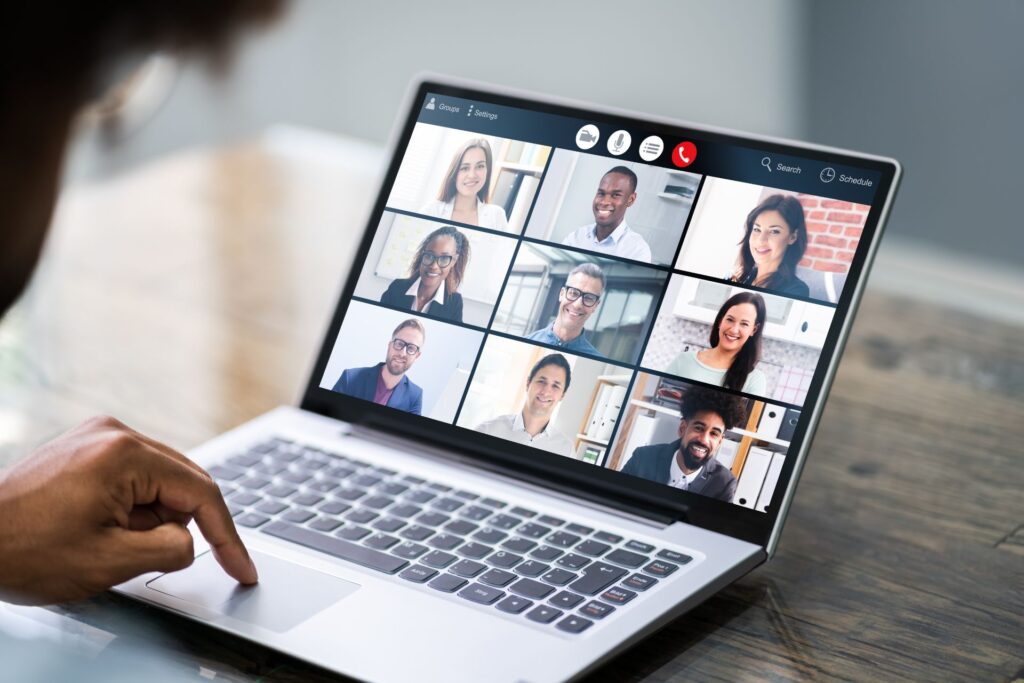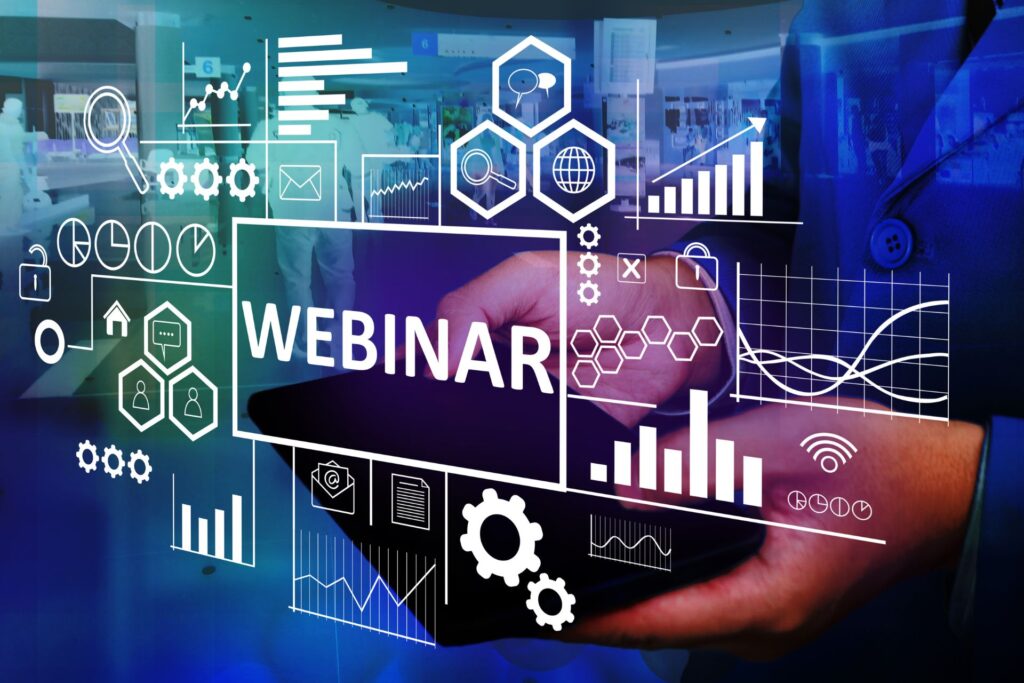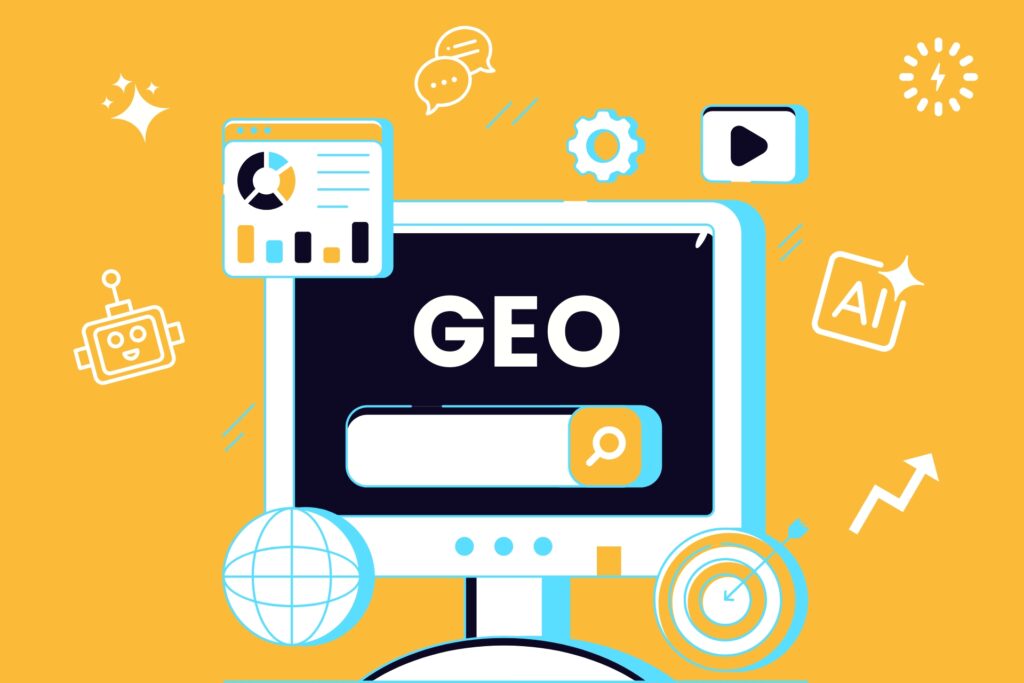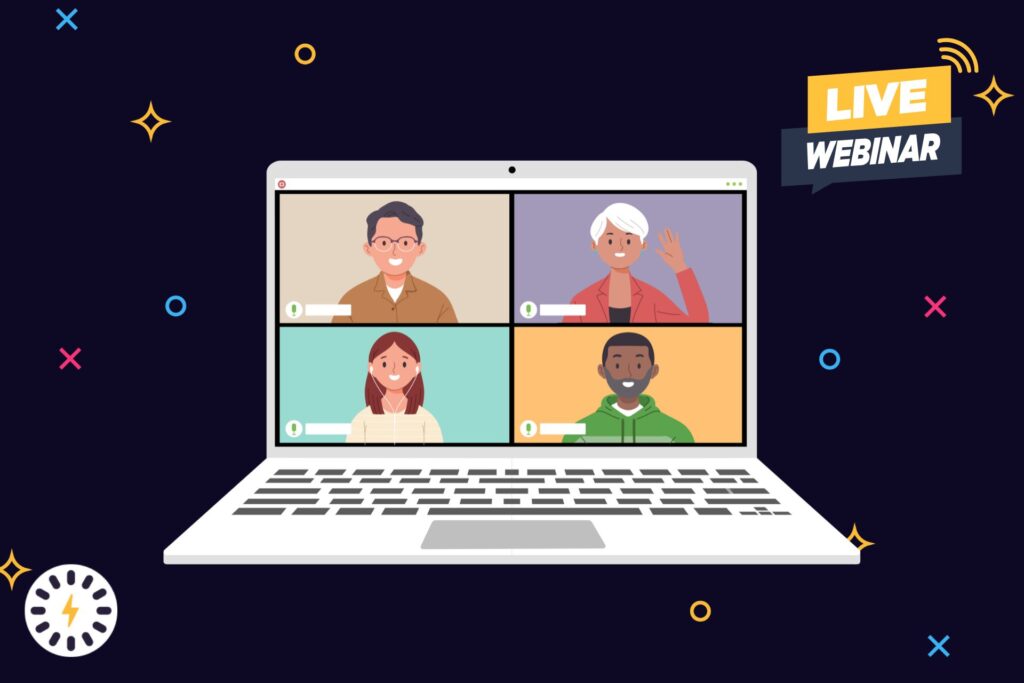The webinar (or webinar) has become an indispensable digital marketing tool. It enables you to communicate directly with a targeted audience, educate, promote products or services and build a relationship of trust with prospects. Accessible from anywhere, interactive and inexpensiveIt's just as well-suited to the self-employed as it is to large companies.
With the rise of telecommuting and digital learningcontent consumption habits have evolved. Internet users are looking for engaging formats that deliver value in real time. It's against this backdrop that webinars are booming: in 2023, more than 60 % marketers have integrated webinars into their content strategy, and this trend is only intensifying.
Why are webinars so popular?
✔ A powerful tool for generating leads Webinar participants are generally qualified prospectsalready interested in your theme. This is an ideal opportunity to capture their contact details and nurture the commercial relationship.
✔ An interactive and engaging format Unlike a traditional video or blog post, a webinar allows live exchanges with participants: Q&A, polls, live demonstrationsThese are all ways of capturing their attention and responding precisely to their needs.
✔ Reusable, evergreen content a recorded webinar can be reused in several formats YouTube replay, podcast, blog article, lead magnet... A single event can generate content that can be exploited over the long term.
✔ An excellent training tool companies and freelancers are also using it to offer online trainingaccessible to a wide audience with no logistical constraints.
In this article, we will look at how to organize an effective webinarwhat are the essential toolsand which best practices to capture your audience and convert prospects into customers.
➡ Need a marketing support to implement your digital strategy? Need help organizing a successful webinar and related communications? Let's talk !

Why organize a webinar?
Organizing a webinar is much more than just an online presentation. It's a powerful tool to captivate an audience, convey a powerful message and interact live with prospects or customers. In a world where attention is a scarce resource, webinars offer a format that's easy to use. immersive, engaging and interactive.
Webinars as a communication tool powerful
A webinar allows you to communicate effectively with your audiencewhatever its purpose:
✔ Inform share expertise, popularize a complex subject, introduce new products.
✔ Training To offer an educational session or live tutorial to pass on skills.
✔ Sell Demonstrate the value of a product or service live, respond to objections and encourage action.
Unlike traditional videos or blog posts, a webinar creates a unique a more human and direct relationship with the audience. It's a chance to be authentic and make a lasting impression.
An engaging, interactive format
One of the great advantages of a webinar is its interactivity. Unlike passive content, it encourages participants to ask questions, interact via chat or take part in real-time polls.
Why does it work?
- Live exchange enhances attention and the commitment of participants.
- Interactivity lets you adapt your message based on audience reactions.
- Webinars generate up to 3 times more commitment than a traditional article or video.
Effective marketing leverage to generate leads
A webinar is not just a communication tool, it's also a powerful lead generator. Why is that? Because it attracts qualified prospectsready to engage and listen to a targeted message.
- Collect qualified emails upon registration.
- Segment your audience to propose appropriate offers after the event.
- Strengthen your brand image by demonstrating its expertise live.
Example An SEO agency can organize a webinar on the latest Google trends. By attracting digital professionals with an interest in SEO, the agency gains highly-qualified contacts for its services.
A webinar is a strategic format for share valuable content, interact with your audience and develop your business. It offers a unique opportunity to captivate, convince and convert.

The benefits of a webinar
A webinar is a powerful tool that goes far beyond a simple online presentation. It generates leads, engages an audience and creates lasting content. What's more, it offers excellent return on investment thanks to its international reach and low costs.
Qualified lead generation
A webinar is an excellent way to attract genuinely interested prospects your expertise or services. When someone registers for your event, he or she voluntarily provides contact informationmaking it a qualified lead.
Why does it work?
- Registrations allow you to collect qualified contactspotentially interested in your products or services.
- The audience is committed It reserves time to listen to your presentation.
- A post-webinar follow-up enables you todeepen relationships and convert leads into customers.
Example A SaaS company offering management software organizes a webinar to show how to automate accounting. Participants are professionals looking for a solution, and their contact details are used to follow up sales after the event.
Reusable content creation
One of the greatest advantages of webinars is their reuse potential. By recording your session, you can take advantage of a variety of content :
- Replay accessible on your website or YouTube.
- Extract the best moments to create short videos on LinkedIn or Instagram.
- Transformation into a blog post or as a summary infographic.
- Creating a podcast from the webinar audio.
Example A business coach records a webinar on freelance productivity. He then offers the replay as premium access on his website, while sharing excerpts on his social networks.
Audience engagement and interaction
Webinars offer a much higher level of interaction to other content formats. Thanks to integrated interactive toolsThey enable live exchanges with participants.
- Surveys understanding public expectations in real time.
- Live Q&A Responding to objections and building confidence.
- Live chat to encourage discussion and promote the webinar dynamic.
Good to know:
- The more a participant interacts, the more likely they are to engage with your brand.
- Answering objections live increases chances of conversion.
- Smooth interaction creates a sense of community and proximity with the audience.
Example An SEO trainer hosts a webinar on optimizing WordPress sites. By launching a survey at the beginning of the session ("What's your biggest SEO challenge?"), she adapts her speech according to the answers and makes her presentation more relevant (and can adapt her offer at the end according to needs!).

Reduced costs compared to physical events
Organize a webinar costs much less than a face-to-face event. It saves on :
- Room rental
- Travel and accommodation expenses
- Expensive audiovisual equipment
Why is this an asset?
- Accessible to an international audience without logistical constraints.
- Easy to organize A good webinar tool is all you need.
- Cost-effective high ROI thanks to digital reach and leads generated.
Webinars: a highly effective marketing tool!
✔ Generates qualified leads and facilitates sales follow-up.
✔ Enables create reusable content and sustainable.
✔ Promotesinteraction and commitment with the audience.
✔ Offers a excellent ROI thanks to its low cost and international reach.

How to organize a webinar?
A successful webinar relies on careful preparation and smooth execution. Here are the essential steps to ensure an engaging and effective event.
1. Define objective and format
First and foremost, it's essential to clarify the purpose of the webinar. What is the main goal?
- Train an audience on a specific topic
- Presenting a product or service
- Generate leads and qualify prospects
- Retaining an existing community
Then choose the right format:
- Masterclass an expert shares his knowledge on a given subject
- Product demo live presentation of the functionalities of a tool or solution
- Round table several speakers debate and exchange views on a topical issue
- Interactive coaching session a more personalized approach with case studies and Q&A sessions
Each format has its own specificities, so it's important to choose the one that's right for your audience and your objectives.
2. Choosing the right webinar platform
The choice of platform is crucial to ensuring a smooth, professional experience. Here are a few criteria to consider:
- Ease of use intuitive interface, simplified access for participants
- Interactive features live chat, polls, screen sharing
- Capacity number of simultaneous participants
- Audio and video quality : essential for keeping the audience's attention
- Cost and integration : compatibility with CRM and emailing tools
Popular solutions include Zoom, Livestorm, Webex and Microsoft Teams. It's advisable to test the platform beforehand to avoid unpleasant surprises on the big day.
3. Prepare content and script
A structured and captivating webinar requires rigorous preparation:
- Create a detailed plan with an introduction, development and conclusion
- Taking care of the first few minutes a punchy tagline immediately grabs attention
- Preparing dynamic visual aids slides, videos, live demonstrations
- Anticipating questions and plan responses to fluidify interaction with the audience
It's also a good idea to rehearse the webinar to make sure you've got all the parts right. Repeating things out loud can also help!

4. Promote your webinar
A well-prepared webinar is useless without a qualified audience. An effective promotion strategy is therefore essential:
- Using social networks LinkedIn, Twitter, Facebook or Instagram publications
- Send targeted emails to its contact base with reminders a few days before the event
- Create an optimized registration page with a clear description and an incentive to register
- Advertise the webinar on specialized platforms like Eventbrite or Meetup
The aim is to attract as many interested and committed participants as possible.
5. Engaging your audience during the webinar
A webinar shouldn't just be a top-down presentation. Audience interaction is a key success factor:
- Encourage participants to ask questions and respond in real time
- Use interactive polls and quizzes to capture attention
- A clear call to action at the end of the webinar: newsletter subscription, free trial of a service, appointment booking
The more the audience is involved, the greater the impact of the webinar.
6. Exploiting replay and spin-offs
Once the webinar is over, it's essential to make the most of it:
- Send registration to subscriberseven those who were unable to attend the live event
- Reuse content in different formats YouTube video, blog post, infographic summary
- Analyze webinar performance participation rates, commitment, participant feedback
A webinar can thus become a real long-term marketing leverageby generating leads and nurturing an effective content strategy.
By following these steps, a well-organized webinar can not only achieve its immediate objectives, but also become part of an overall communication and conversion strategy. The key to success lies in good preparation, effective promotion and strong engagement with the audience.

Comparison of the best webinar tools in 2025
The choice of platform is essential to ensure a smooth, interactive and engaging webinar. Here's a comparison of the best tools based on several criteria: ease of use, interactive features, cost and use cases.
| Tool | Ease of use | Cost | User experience | Key features | Integration (CRM, email, etc.) | Ideal for |
|---|---|---|---|---|---|---|
| Zoom Webinars | ★★★★☆ | From 79 €/month | Fluid interface, but can be complex for beginners | - HD video quality- Engagement (polls, Q&A, chat)- Integration with YouTube & Facebook- Screen sharing | Yes (HubSpot, Mailchimp...) | Conferences and trade events |
| Livestorm | ★★★★★ | Free until 30 participants, paying plans from 79 €/month | Sleek, easy-to-handle design | - Live chat and moderation- Integrated CTAs- Personalized email automation- Registration forms- CRM and marketing automation integrations | Yes (HubSpot, Salesforce, Zapier...) | Marketing and training webinars |
| Webex Webinars | ★★★☆☆ | On request (from €13.50/month for small teams) | Pro interface, but sometimes difficult to set up | - Advanced security- Real-time translations- Virtual backgrounds- Interactive whiteboard | Yes (Microsoft 365, Salesforce...) | Companies and large teams |
| GoTo Webinar | ★★★★☆ | From 49 €/month | Smooth experience for presenters and participants | - Automatic registration- Advanced reporting & analytics- CRM integration- Emailing tools | Yes (CRM and emailing tools) | Coaching, training and interactive webinars |
| Microsoft Teams Webinars | ★★★☆☆ | Included with Microsoft 365 Business | User-friendly interface for Microsoft users, but less intuitive for others | - Webinars for up to 1,000 participants- Surveys and analytics- Full integration with Office- Recording and PowerPoint presentation | Yes (integrated with Microsoft 365) | Internal and corporate webinars |
| Demio | ★★★★★ | From 34/month | Intuitive, modern interface, perfect for beginners | - Interactive sessions- Automated replays- Customized branding | Yes (HubSpot, Marketo...) | Marketing and customer engagement webinars |
| ClickMeeting | ★★★★☆ | From 30/month | Clear interface, but some bugs reported | - Customizable meeting rooms - Easy webinar monetization - PayPal integration | Yes (Zapier, Salesforce, Mailchimp) | Paid educators, trainers |
| BigMarker | ★★★★☆ | From 99/month | Advanced yet feature-rich experience | - Live and automatic streaming- Customizable registration pages- Advanced automation- Live CTAs | Yes (Zapier, Salesforce, Mailchimp) | Automated webinars and interactive events |
Which tool is right for you?
- 🎯 For quick and easy use → Livestorm or Demioare excellent choices, offering an intuitive interface and advanced marketing features.
- 🏢 For a professional and secure webinar → Webex Webinars or Microsoft Teams Webinars are ideal for handling large volumes of participants.
- 📈 For marketing and lead generation → Zoom Webinars, GoTo Webinar or Demio
- 💰 For monetized training courses → ClickMeeting or BigMarkerare distinguished by their engagement tools (CTA, automated follow-up, audience segmentation).
What's the right webinar tool for me?
- Best tool for large conferences and events: Zoom Webinars
- Ideal for startups and marketers: Livestorm
- The most secure and advanced tool : Webex Webinars
- Integrated solution for companies using Microsoft 365 : Microsoft Teams Webinars
- Best value for small teams : Demio
- Ideal for fee-based online training : ClickMeeting
- Premium tool with numerous automations : BigMarker
Depending on needs (simplicity, cost, interactive features, integrations), each tool has its strengths. The choice will depend on the size of the audience, the type of event and the desired level of interactivity.
The right choice of platform will not only offer a seamless experience for participantsbut also optimize marketing impact and lead conversion.
Livestorm and Demio are the most accessible for novices, while Zoom Webinars and Webex are best suited to large companies and conferences.

Webinars have become an essential tool for companies, freelancers and trainers who wish to generate qualified leads, share their expertise and strengthen their brand image. This interactive format creates a direct link with its audience, while offering engaging, reusable content.
✅ A well-prepared webinar achieves several objectives informing, selling, training or building audience loyalty.
✅ Interaction is the key to success Live: answering questions live, using polls and encouraging exchange improve engagement and retention.
✅ The choice of platform directly influences the user experience Tools such as Zoom Webinars, Livestorm or Demio offer features tailored to different needs.
✅ A good promotion strategy is essential Social networks, emailing and co-hosting help increase reach and registration rates.
Ready to organize your first webinar?
Whether to introduce a new product, share expertise or build community loyalty, a well-organized webinar can be a real growth lever.
➡️ First step: define your objective and choose your platform.
➡️ Prepare engaging content and structure your session.
➡️ Get started and measure the results to optimize future events!

And if you'd like us to help you structure your digital marketing strategy, don't hesitate to contact us!
Pauline Jeannerot
Questions and answers on webinar organization
How do I link to a webinar?
Creating a link to a webinar depends on the platform used. Here are the general steps:
-
Create an event on your webinar platform
- On Zoom Webinars, Livestorm, GoTo Webinar or Microsoft Teams Webinars, create a session by entering the date, time and required information.
- Then generate a unique registration or access link to share with your audience.
-
Customize link
- Some tools allow you to create an easy-to-remember, branded link to your domain name.
- Example: monentreprise.com/webinar-SEO redirecting to registration.
-
Share the link effectively
- Emailing: Integrate the link into a campaign with a call to action.
- Social networks: Post on LinkedIn, Twitter and Facebook to maximize visibility.
- Website and blog: Add a banner with the registration link.
- Event platforms like Eventbrite and Meetup: Distribute your webinar via these tools.
Recommended tool
Livestorm allows you to generate an easily shareable webinar link with a personalized registration page.
What's the best day to hold a webinar?
According to several studies on webinar participation rates :
- Tuesday and Wednesday are the best days, with around 30 % more participation.
- Thursday works particularly well for webinars aimed at professionals.
- Mondays and Fridays should be avoided, as participants are less available.
- Saturdays and Sundays are not recommended, except for general audiences or special events.
Ideally, you should schedule your webinar on a Tuesday or Thursday in the late morning (between 10 and 11 a.m.) or early afternoon (between 2 and 4 p.m.).
How long should a webinar last?
The optimum duration depends on the format:
| Webinar type | Recommended duration |
|---|---|
| Product presentation | 30 to 45 minutes |
| Masterclass or training | 60 to 90 minutes |
| Round table or panel of experts | 45 to 60 minutes |
| Interactive Q&A | 20 to 40 minutes |
It's a good idea to always allow 10-15 minutes for questions at the end of the webinar, to maximize engagement.
How to organize a free webinar?
If you're on a tight budget, here are some solutions available free of charge:
-
Use Google Meet or Microsoft Teams Webinars
- Google Meet can host up to 100 participants free of charge.
- Microsoft Teams Webinars (free version) offers similar features.
-
Test free versions of specialized platforms
- Livestorm lets you organize a free webinar with up to 30 participants.
- Zoom offers a free version with a limit of 40 minutes per session.
- ClickMeeting offers a free 7-day trial.
-
Broadcast live on YouTube or Facebook
- These platforms allow unlimited distribution in terms of participants.
- However, they offer fewer interactive tools such as polls and Q&As.
For a marketing webinar, Livestorm's free version is a good choice. For an in-house event, Google Meet is sufficient.
Is a webinar a video call?
Well, not exactly. Here's the main difference:
- A webinar is an online conference where a presenter addresses a larger audience, often without direct voice interaction.
- A video call (Zoom Meeting, Google Meet) enables an interactive discussion where several participants can talk simultaneously.
A webinar is generally more structured, with a presentation, visual aids and features such as polls and Q&A.
How do I download a webinar?
If you would like to record a webinar to watch later :
-
On Zoom, GoTo Webinar, or Livestorm
- Activate the recording option before starting the event.
- Download the recording at the end of the session.
-
From YouTube or Facebook Live
- If the webinar is broadcast to a live audience, use the "Upload video" option in YouTube Studio.
We recommend that you obtain the organizer's permission before downloading a webinar that does not belong to you.
Can Google Meet be used to organize a webinar?
Yes, but with certain limitations:
Benefits
- Free for up to 100 participants.
- Easy to use and accessible without special installation.
- Good integration with Google Workspace.
Disadvantages
- Few advanced interactive tools (no polls, no calls to action).
- Registration not available on the free version.
- Limited to 1 hour on the free version.
For structured webinars with advanced interaction, platforms such as Livestorm or Zoom Webinars are more suitable.
How do you attract more than 100 people to a webinar?
-
Create an optimized registration page
- A punchy title like "How to double your SEO traffic in 2025?"
- A simple registration form to maximize the conversion rate.
-
Promote on multiple channels
- Emailing with strategic reminders before the event.
- LinkedIn and Twitter publications with sponsored ads if required.
- Collaboration with partners and influencers to extend reach.
-
Using a lead magnet
- Offer an exclusive document (checklist, ebook) in exchange for registration.
-
Planning at the right time
- Tuesday or Thursday at 11 a.m. or 2 p.m. to optimize turnout.
A good video teaser on LinkedIn can considerably increase the number of subscribers.
How to organize a Zoom webinar?
Organize a webinar on Zoom is simple and effective, especially if you want to reach a large audience with interactive tools such as polls and Q&A.
Steps to organize a Zoom webinar
-
Create a Zoom account and activate the Webinar option
- Go to Zoom Webinars.
- Subscribe to an adapted plan (paying).
-
Setting up the webinar
- In the dashboard, go to "Schedule a webinar".
- Set date, time and speakers.
- Activate interactive features (chat, polls, mandatory registration).
-
Personalize registration and emails
- Add a personalized Zoom registration page.
- Enable automatic reminders for subscribers.
-
Promoting the event
- Distribute the registration link on social networks and newsletters.
- Integrate a CTA on your website.
-
Launch and host the webinar
- Test your equipment beforehand.
- Encourage questions and interaction via chat.
- Save the session for replay.
Good to know: Zoom Webinars is ideal for companies wishing to organize professional, interactive webinars with stable video quality.
How to organize a webinar with Teams?
Microsoft Teams Webinars is an alternative for those already using Microsoft 365.
Steps to organize a Teams webinar
-
Create an event in Microsoft Teams
- Open Microsoft Teams and go to the "Calendar" tab.
- Select "New webinar".
-
Configure details
- Add a title, description and date.
- Set registration parameters (public or restricted).
-
Share invitation
- Send an email with the participation link.
- Publish on professional networks (LinkedIn, company intranet).
-
Host the webinar
- Use interactive features (chat, Q&A, polls).
- Save session for replay.
-
Analyze post-event performance
- Download participation statistics via the Microsoft 365 dashboard.
Microsoft Teams Webinars is ideal for companies already using the Microsoft environment and wishing to organize internal or external quality events.
What tools should you use to organize a webinar?
The webinar tools are not limited to the hosting platform. Here is a complete list of essential tools :
1. Webinar hosting
2. Promotion and registration
- Eventbrite to manage registrations.
- LinkedIn Events to invite your network.
- Mailchimp for emailing and reminders.
3. Engagement and interaction
- Slido for real-time surveys.
- Mentimeter to gamify the webinar.
- Canva to create attractive visuals.
A good webinar is more than just a video broadcast, it includes an ecosystem of tools that encourage registration, engagement and post-event analysis.
What's the difference between a webinar and a videoconference?
Although the terms are often confused, a webinar and a videoconferencing have different objectives.
| Criteria | Webinar | Videoconferencing |
|---|---|---|
| Format | Presentation to the general public | Meeting between several people |
| Interactivity | Q&A, polls, chat, but little audio from participants | All participants can speak |
| Objective | Training, sales, mass communication | Internal collaboration and discussion |
| Adapted tools | Zoom Webinars, Livestorm, Webex | Zoom Meeting, Google Meet, Microsoft Teams |
A webinar is designed for communicate a message to a large, passive audiencewhile a videoconferencing favors direct exchanges and collaboration.
How to organize a free webinar?
There are several solutions for organize a free webinar without paid subscription :
1. Use free platforms
- Google Meet Up to 100 participants for 1 hour.
- Microsoft Teams (free version) limited to 100 participants.
- YouTube Live webinars: unlimited webinars.
2. Take advantage of free trials
- Livestorm free for up to 30 participants.
- Zoom Meetings free, but limited to 40 minutes.
- ClickMeeting 7-day free trial.
3. Maximize visibility at no cost
- Promote on LinkedIn Events.
- Use a free registration page on Eventbrite.
- Send reminders via Mailchimp (free version for up to 500 contacts).
A free webinar is an excellent strategy for attract prospectsThe key is to manage promotion and audience engagement.





